At STH we do not often cover consumer releases, however, we wanted to cover a product that we think has a significant impact. The AMD Ryzen Mobile with Radeon Mobile graphics is launched. These CPUs are intended for mobile markets. It is also the first competitive part that AMD has launched for notebooks (and embedded PCs) in some time. These new chips are being launched with a sub 15W TDP combining the solid AMD Ryzen cores with the company’s new Radeon Vega GPUs.
AMD Ryzen with Radeon Vega Graphics
Before we get too far, Patrick was in Taiwan this week and AMD insists on providing heavily watermarked copies of slides so you are going to see his name plastered everywhere. Sorry for this. The boss said, “use the watermarked slides.” We are not going to present everything that AMD showed us. Here is the background on the product: AMD Ryzen is a competitive CPU architecture. AMD Radeon Vega is a new GPU architecture. AM is sticking both on the same package for notebooks.
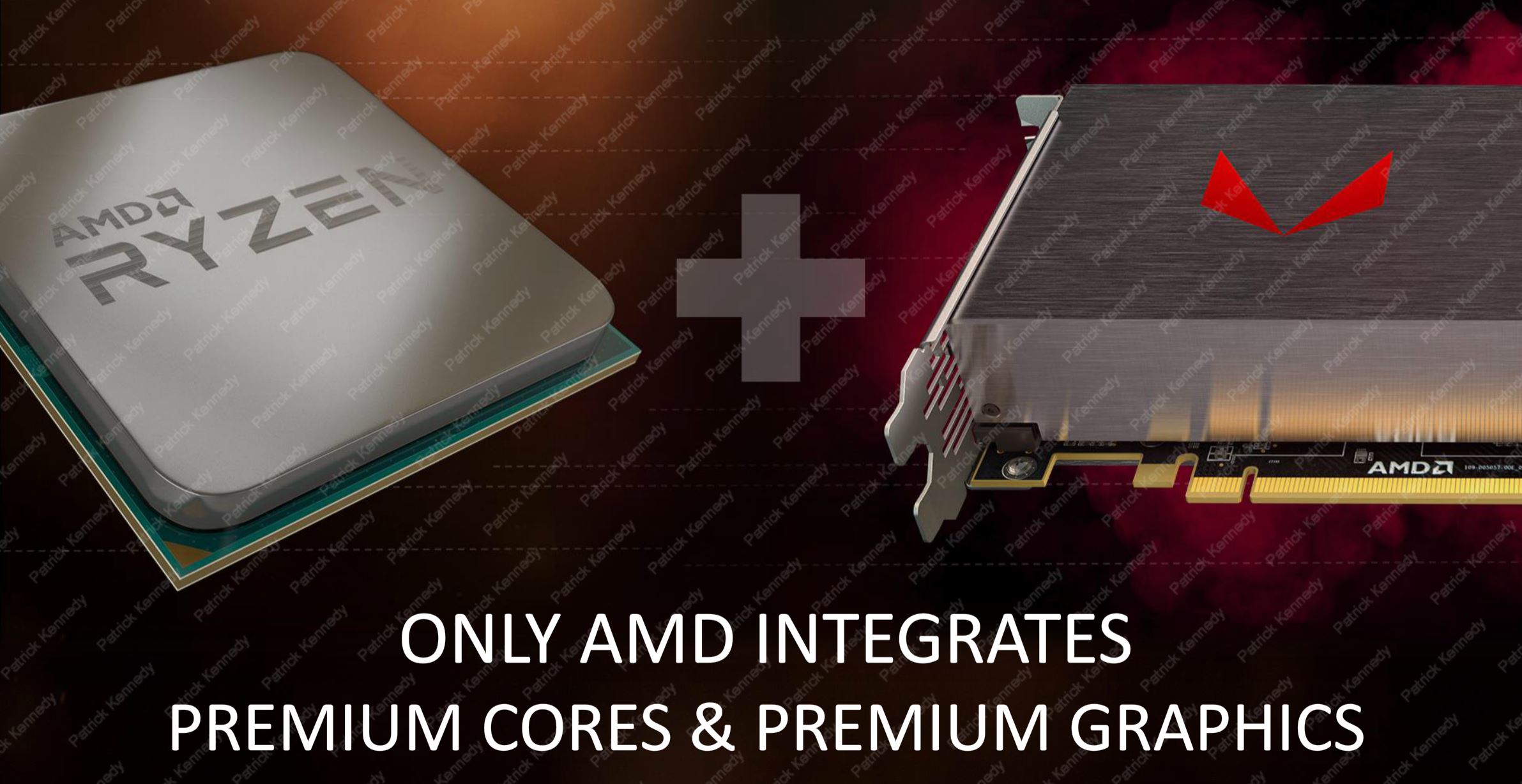
AMD combines GPU and CPU cores on to a single die. For the first time we have a competitive x86 core involved.
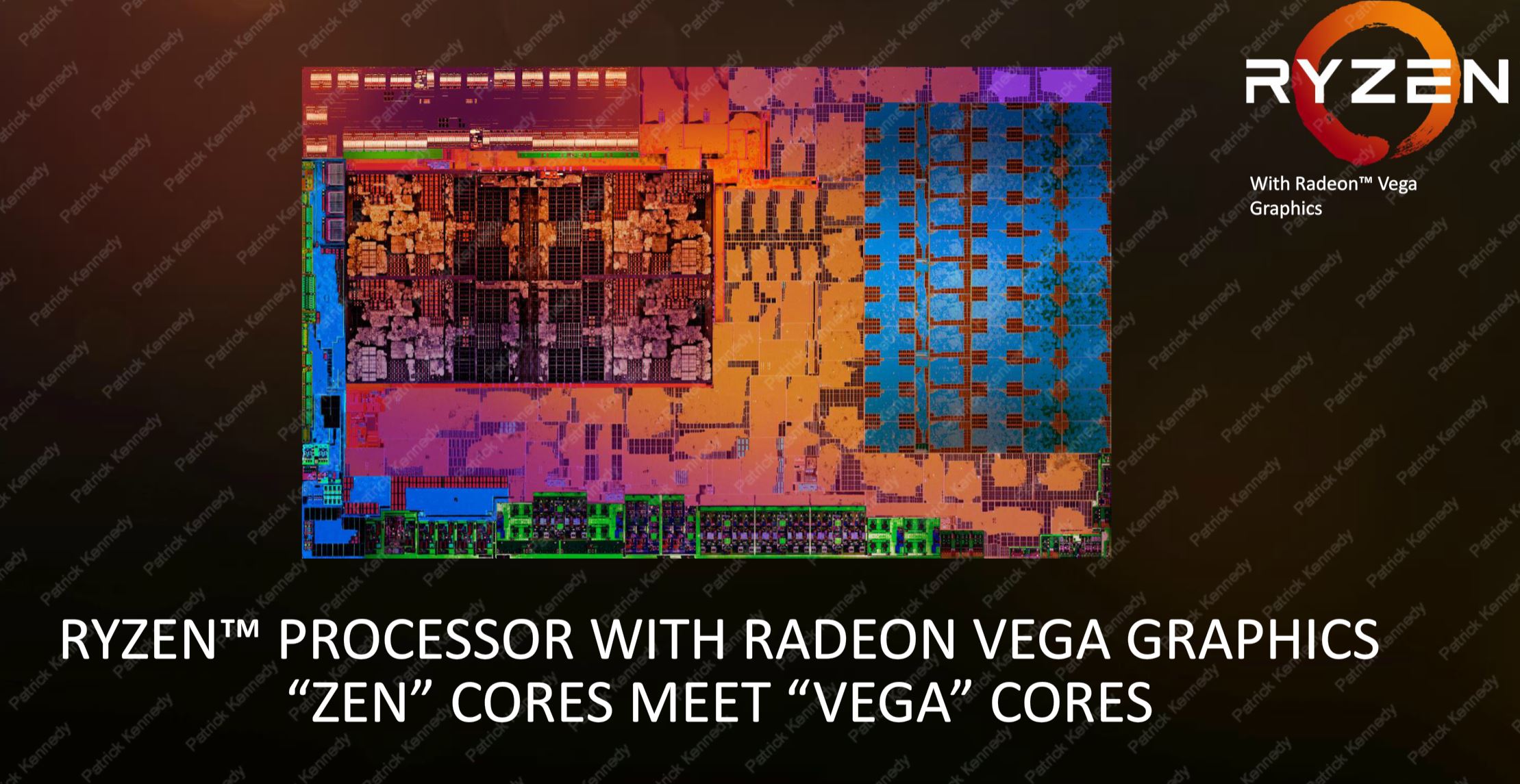
Zooming in on the die shot, we see a 4 core 8 thread CCX Zen complex to the left and a Vega GPU integrated to the right.
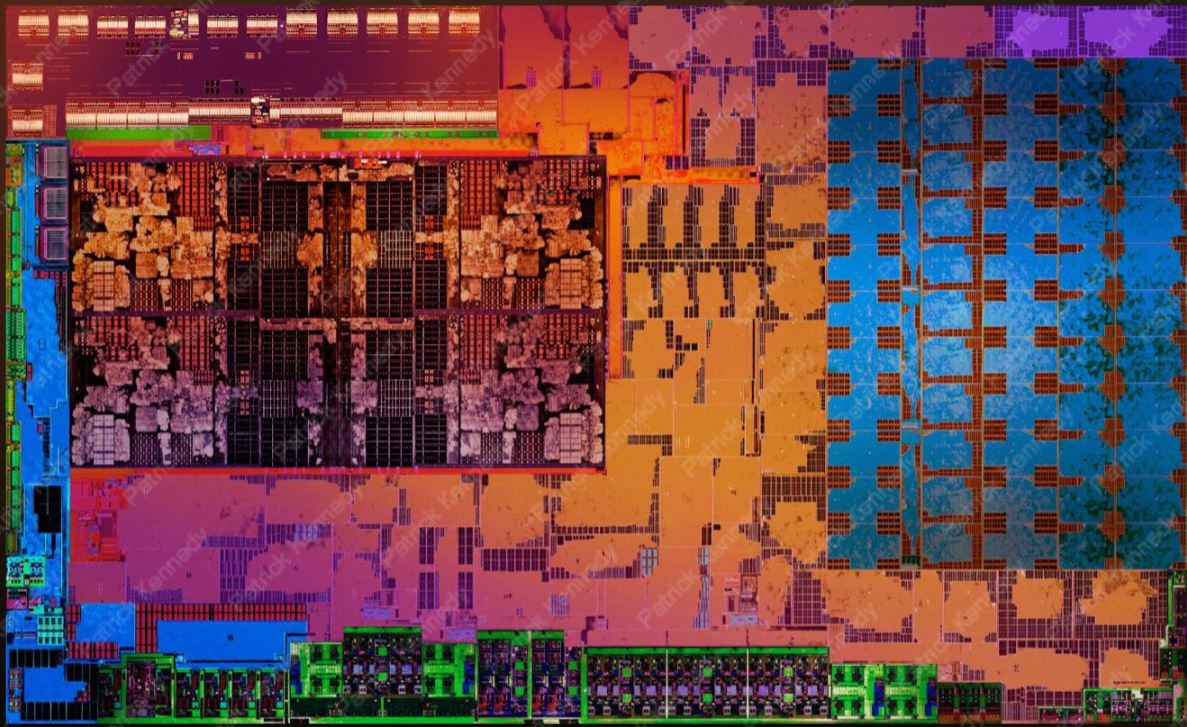
At launch there are two SKUs each with 4 cores 8 threads. We were hoping to see a more extensive set of launch SKUs. The U is for the ultra low power ultra slim market.
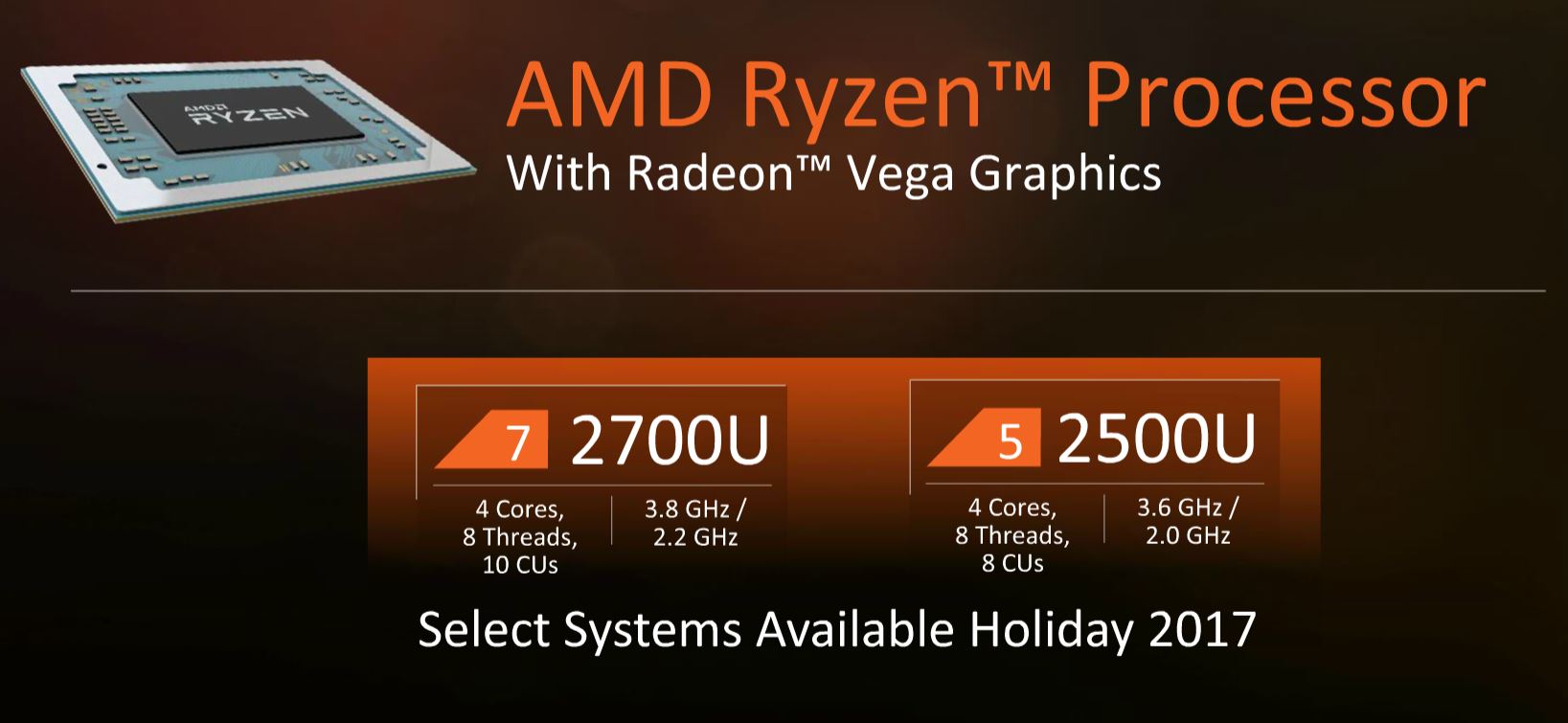
AMD discussed their target metrics for the platform. Luckily, AMD was comparing to their previous generation APU when setting targets.
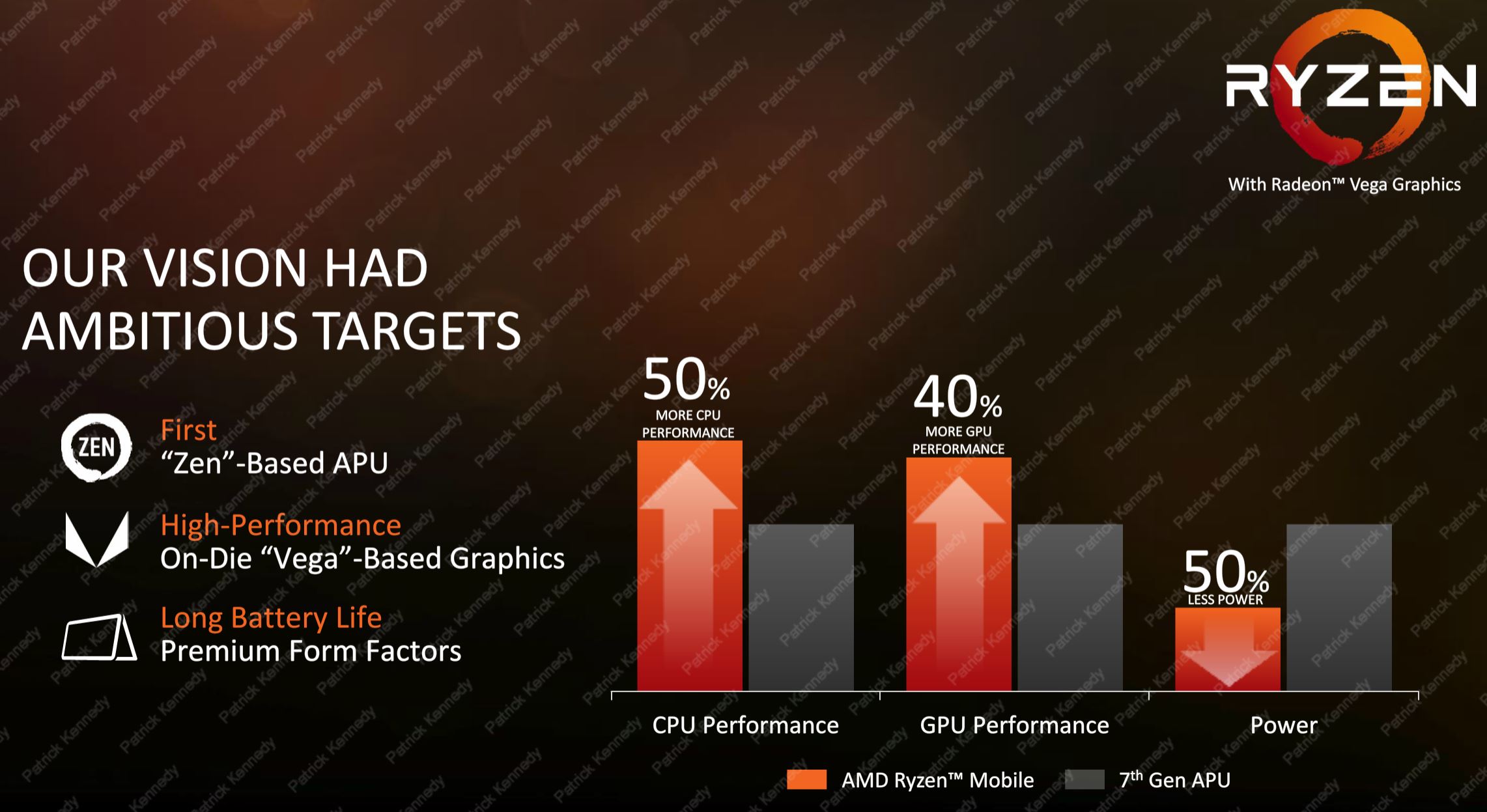
Like many things in life, setting low expectations allows you to exceed these expectations by a large margin.
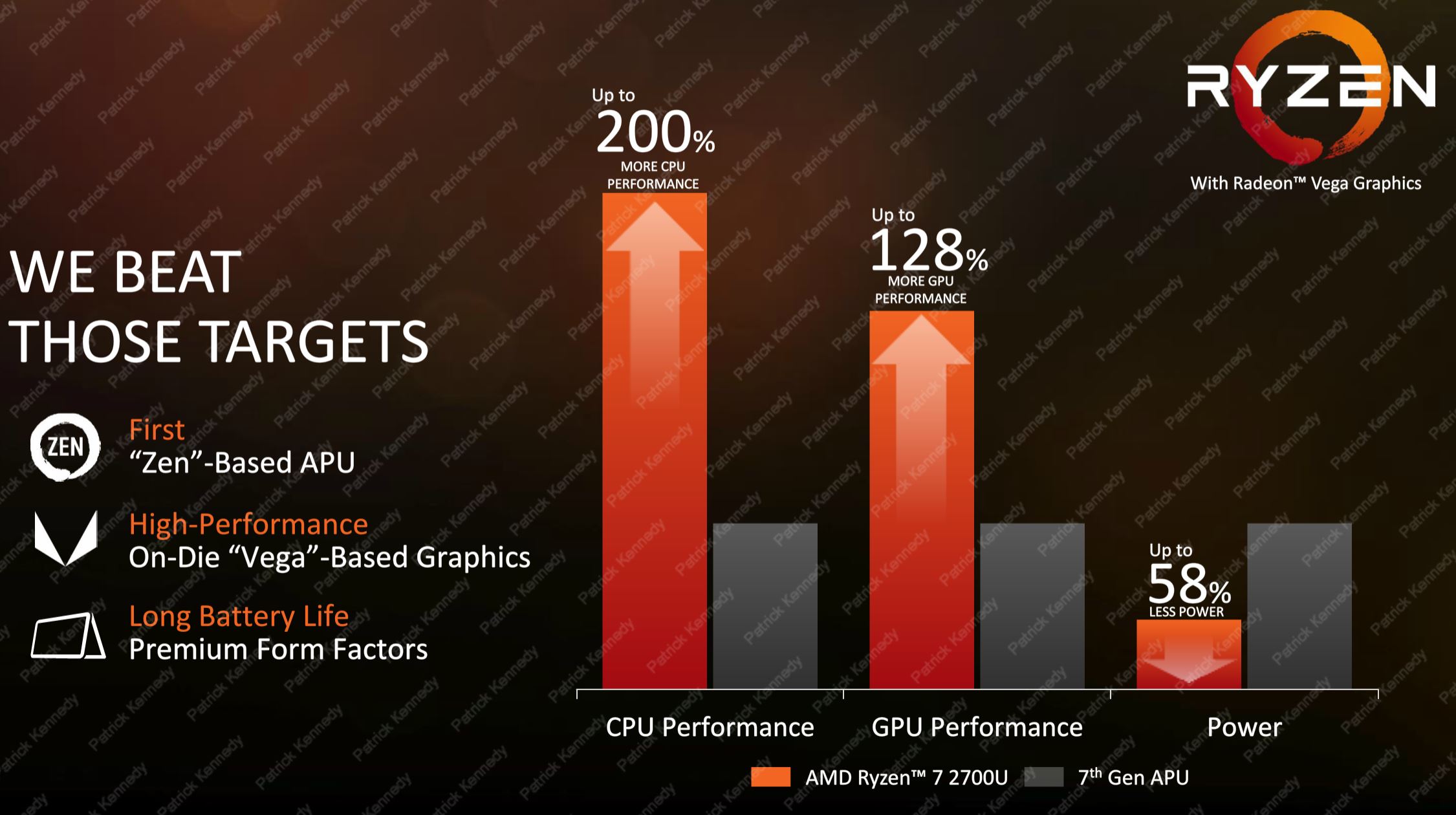
As a result, the performance is significantly better than the previous generation. We also wanted to point out that AMD is not comparing to 8th gen Intel at this point.
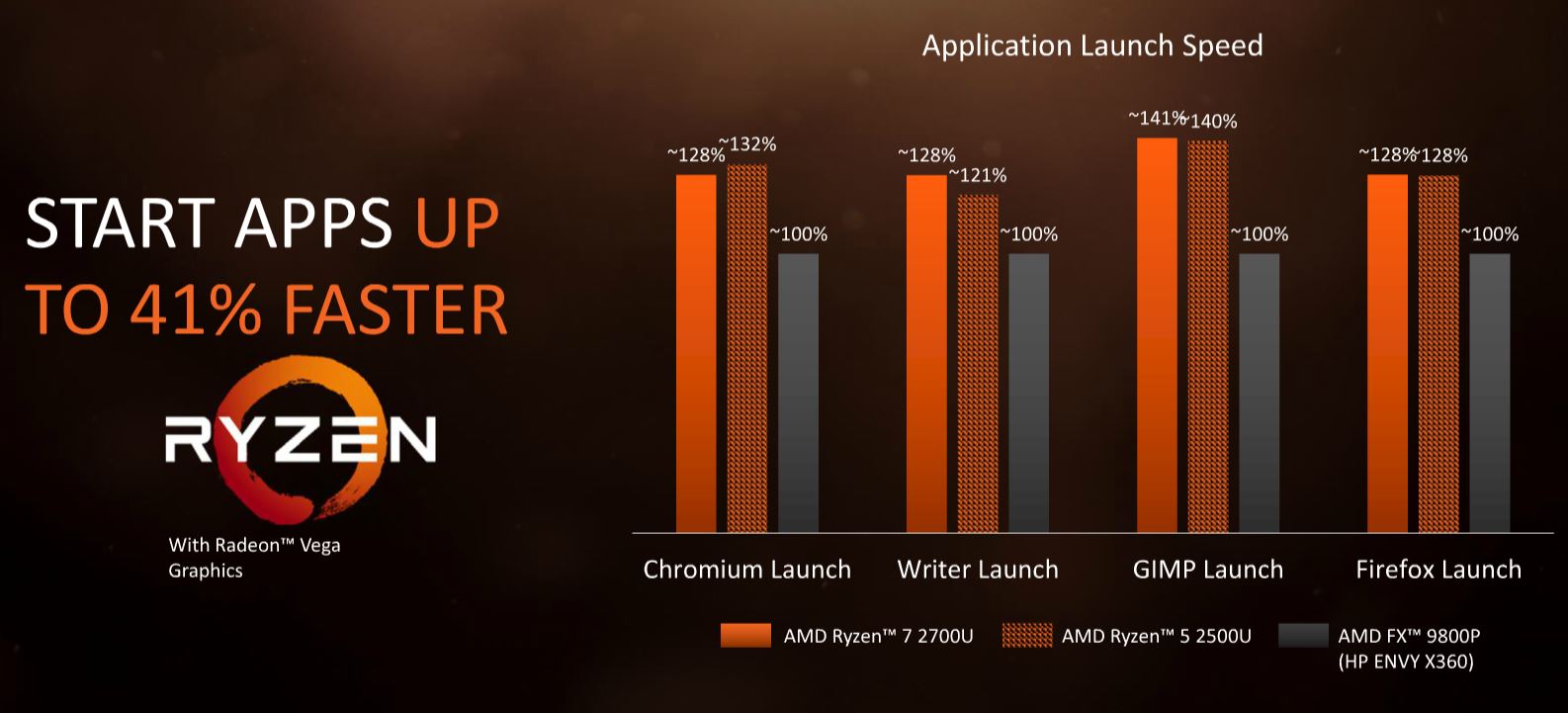
For the competitive domain, AMD again highlights Cinebench R15 and brings in Intel. As we found, Cienbench R15 is a benchmark Intel actually breaks, but it is one that AMD always performs extremely well in. As a result, we see Cinebench a lot because either is the best case example for AMD Zen performance.
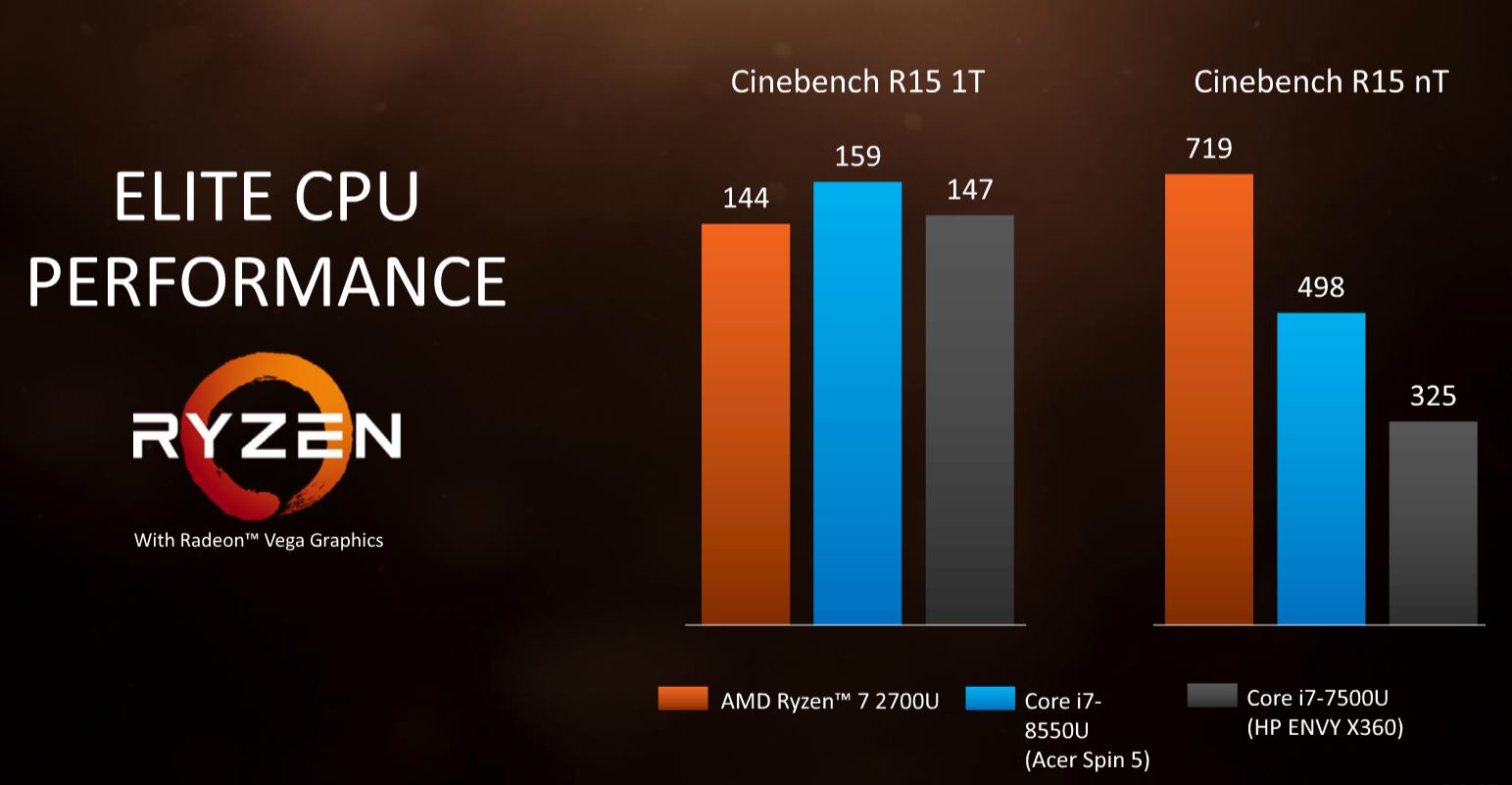
This is a really odd picture. Essentially moving from 1 to 8 threads gives Intel a ~ 3x performance boost for 8x as many threads. AMD gets a 5x boost from 8x as many threads. It may be aggressive turbo de-clocking from Intel gen 8, but that seems like a lot.
AMD uses POVRay here which is another rendering benchmark and shows a comparison to Intel.
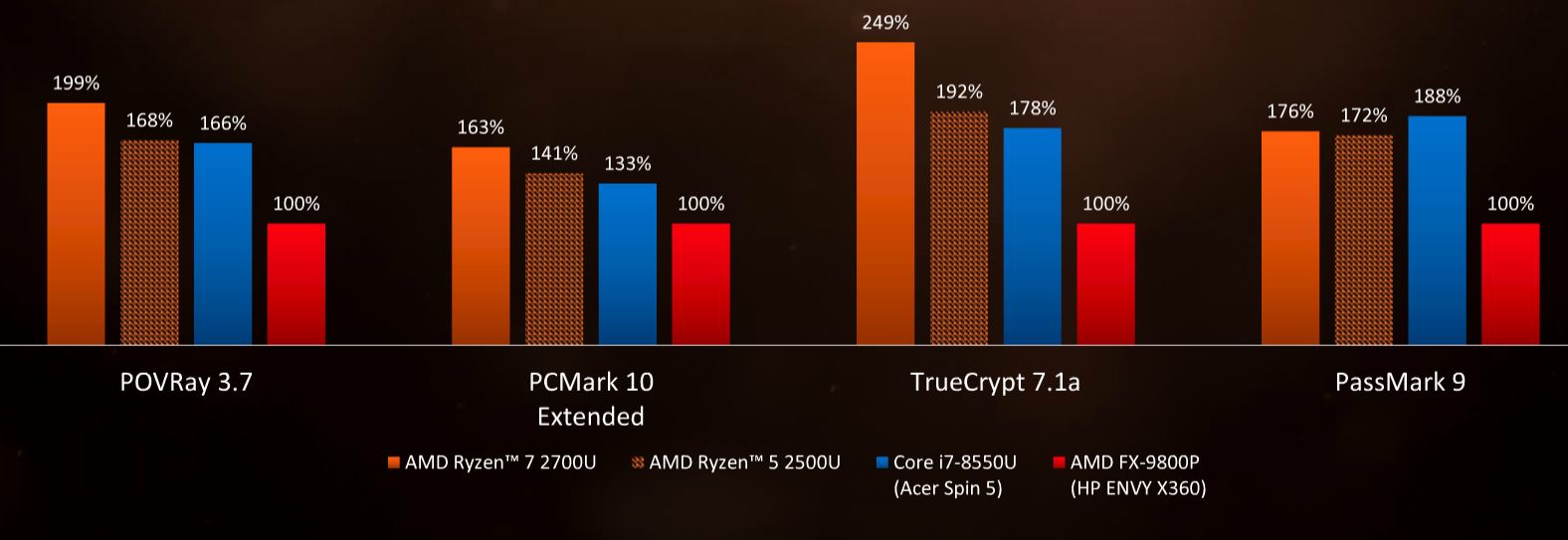
On the GPU side, AMD claims better 3DMark Time Spy numbers.
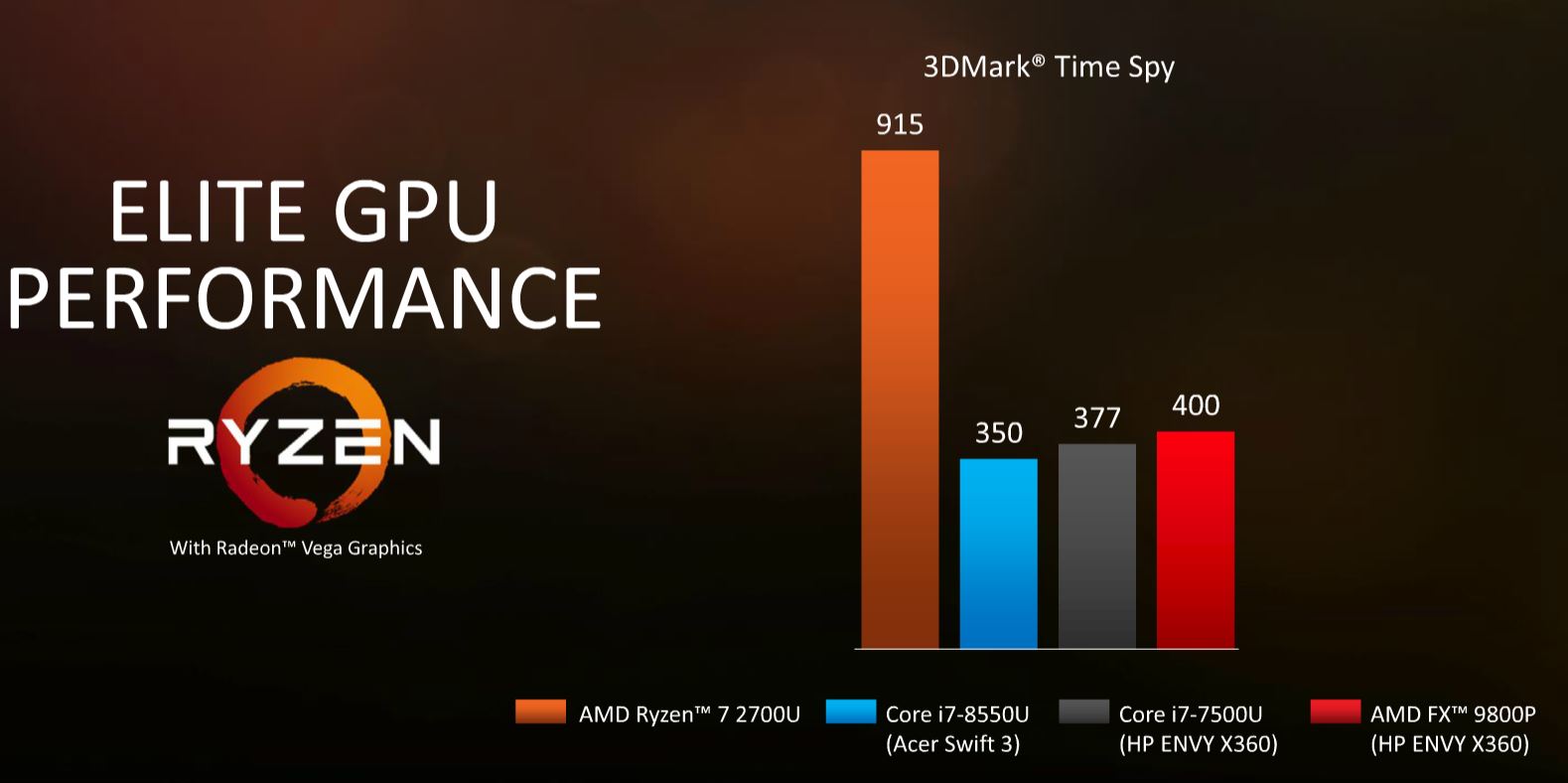
This is the most depressing slide in the lot. Here we have the culmination of an Intel competitive CPU along with an NVIDIA competitive GPU on a single piece of silicon and the first installment gives us this:
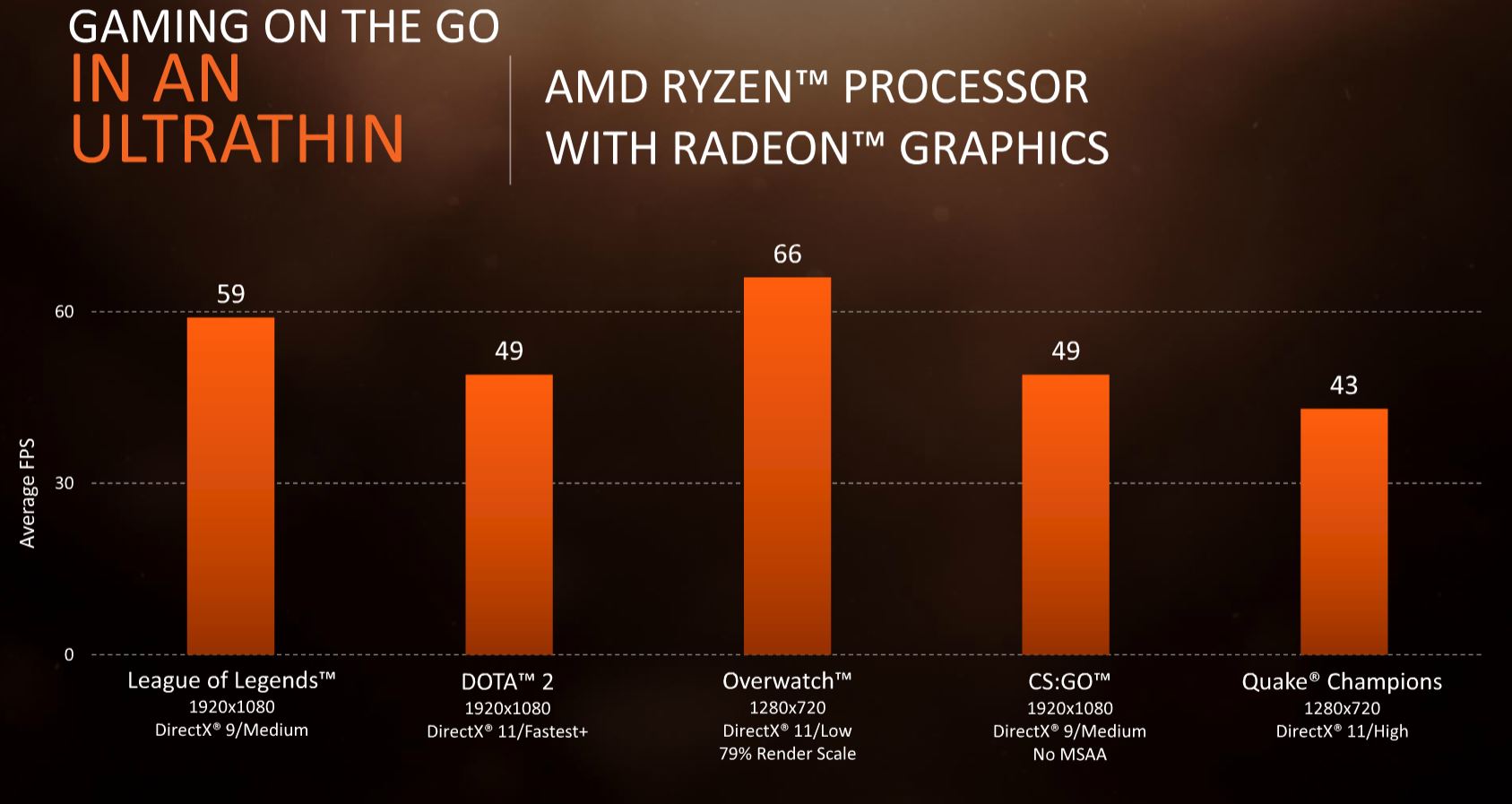
Notice no mention of minimum frame rates. The only way the chip can get above 60fps is essentially to go below native panel resolution of the three launch parts (1920×1080.)
Here is why that is an absolute killer: you are not going to want to game on this. Now, this is the 15W TDP part for ultra-thins. But for this segment of the market, the CPU+GPU cannot deliver gaming. Without that use case, the benefit from the better GPU is minimal. Intel 2D graphics for the desktop are fine. AMD needed to deliver here and missed.
Updated Technology
Updated for the mobile part, and future Ryzen desktop parts will be Precision Boost 2. This eliminates 2-core CPU boost and is more granular in terms of clock controls.
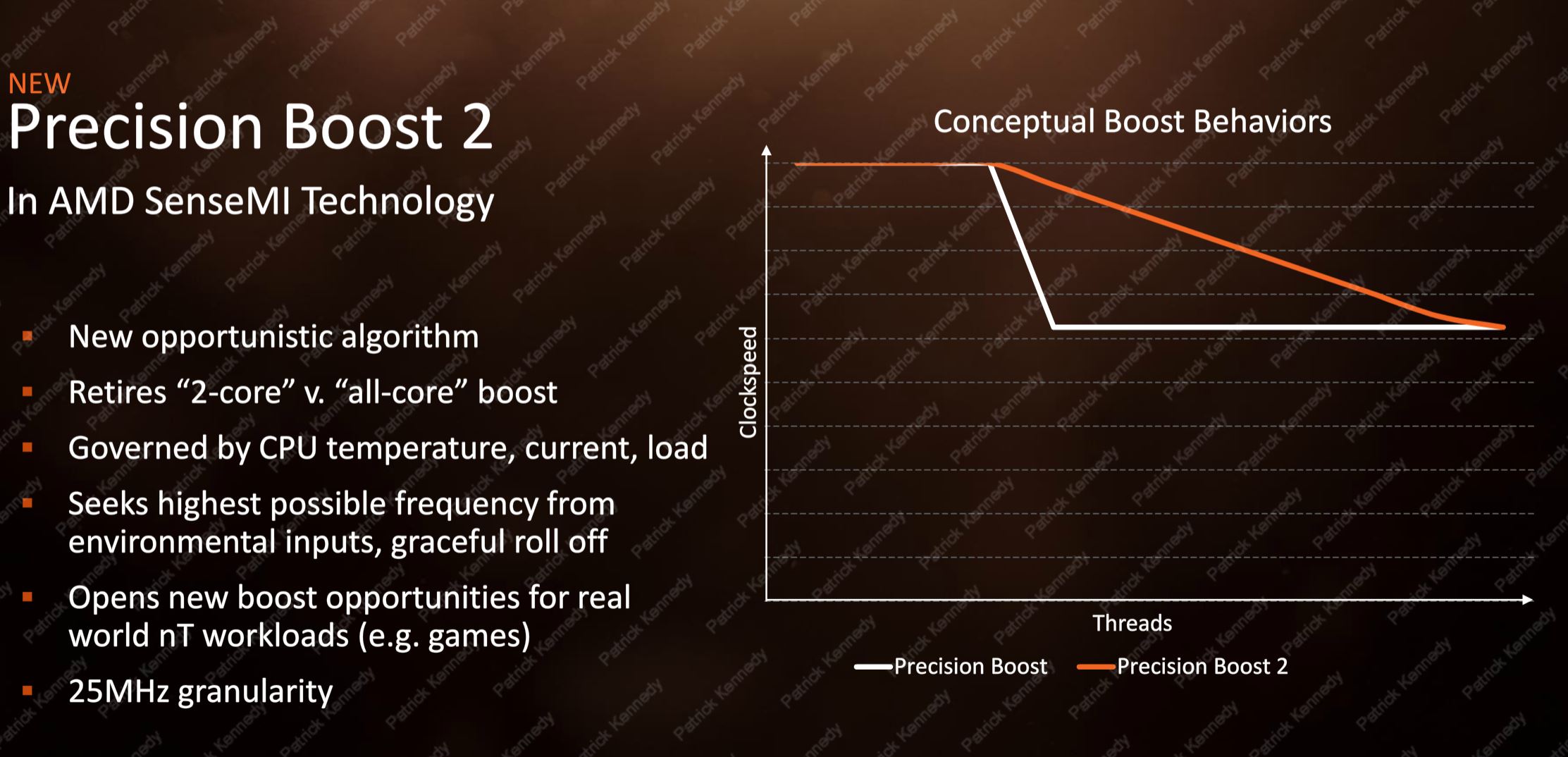
Here is AMD’ example showing the impact of Precision Boost 2 on a four core/ eight thread machine. Perhaps this is what is getting AMD better Cinebench 1-8 thread scaling.
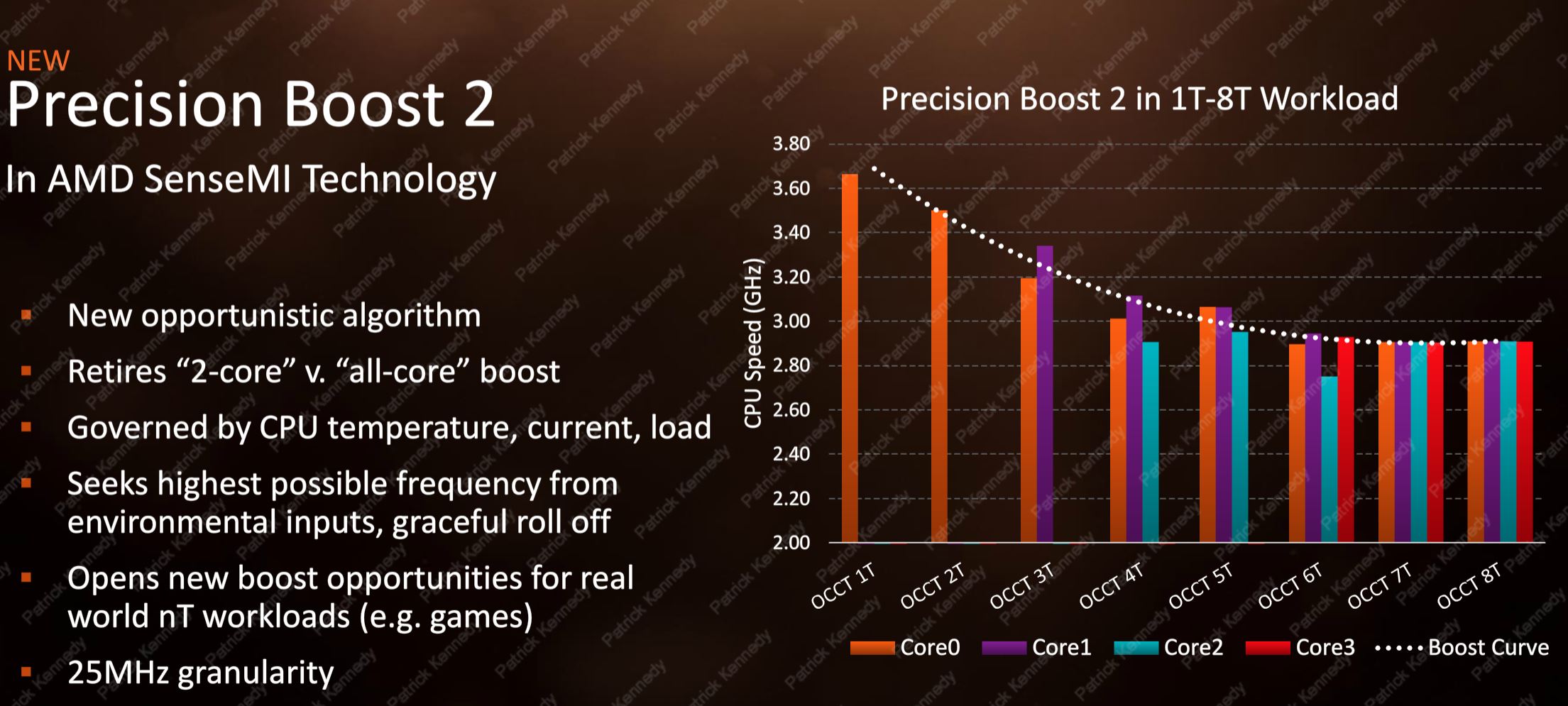
Clocks are adjusting based on power and thermal loads on the CPU.
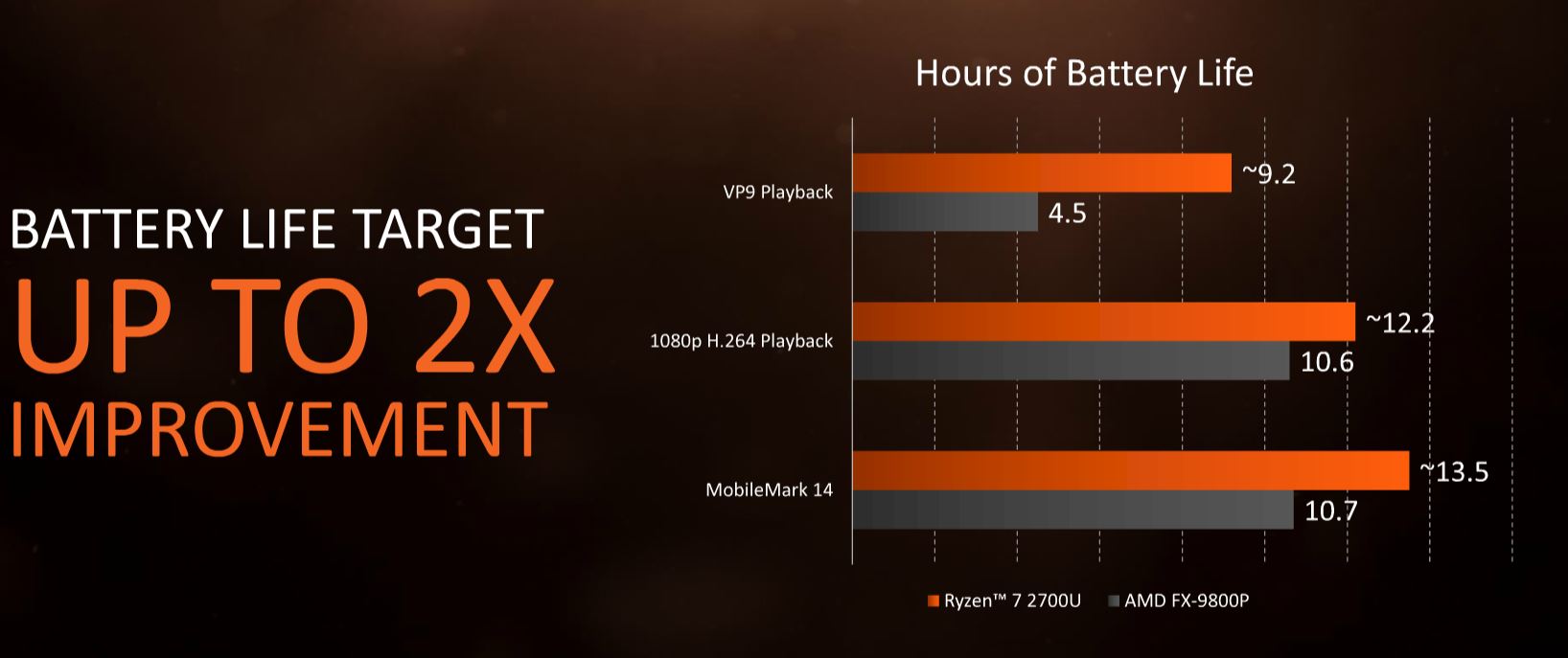
AMD Mobile XFR (mXFR) allows for SKUs to run at higher clocks with good cooling. Essentially automatic “overclocking” for notebooks.
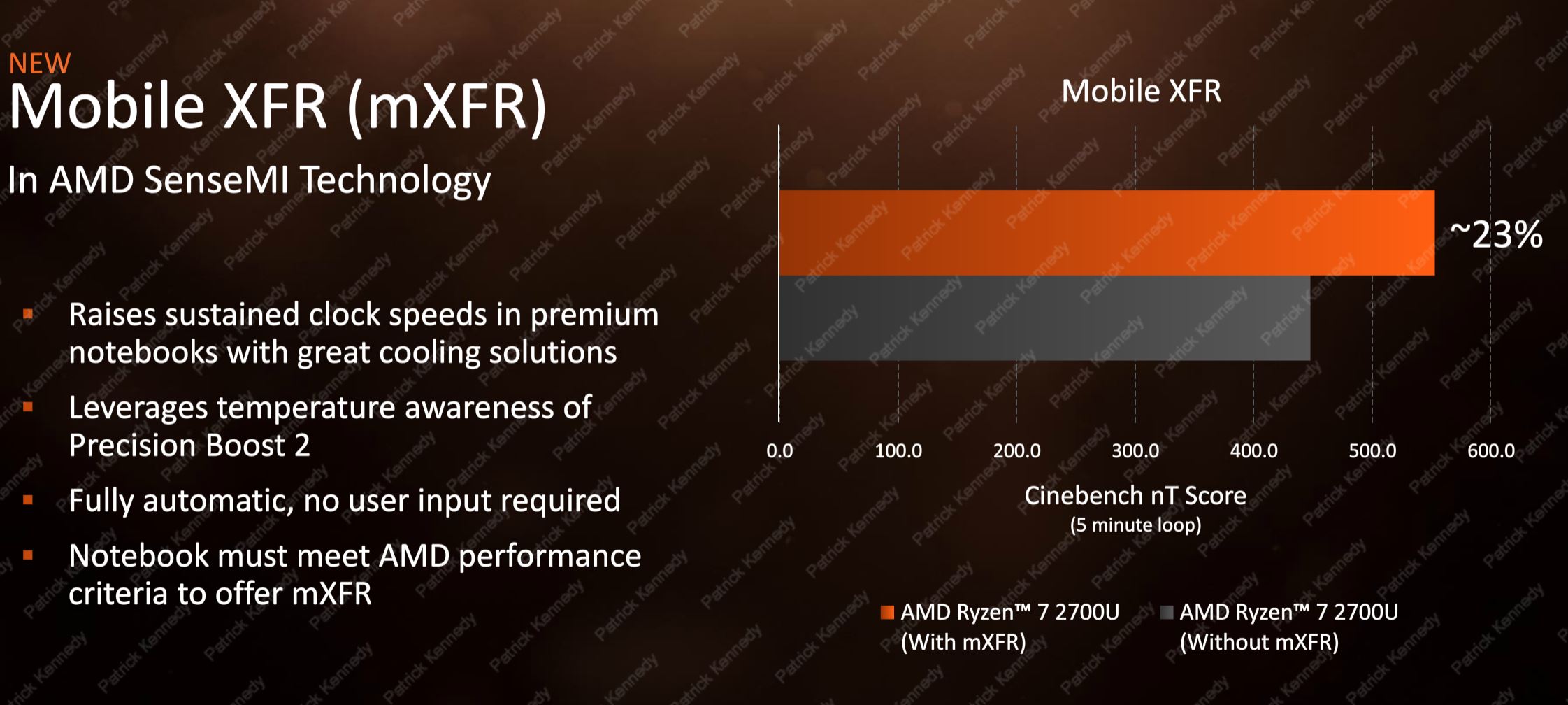
The less marketing way to look at this is that mXFR is more of maximum performance and the grey bar is minimal performance.
AMD Ryzen with Radeon Vega Graphics Launch Notebooks
The launch offerings are a mixed bag and show how gaming fell flat on the 15W parts. AMD has a great roster of Acer, HP, and Lenovo. Dell, ASUS, and others are absent which is a bad sign.

The Acer Swift 3 looks like a nice machine that can be optioned to use either Ryzen CPU.
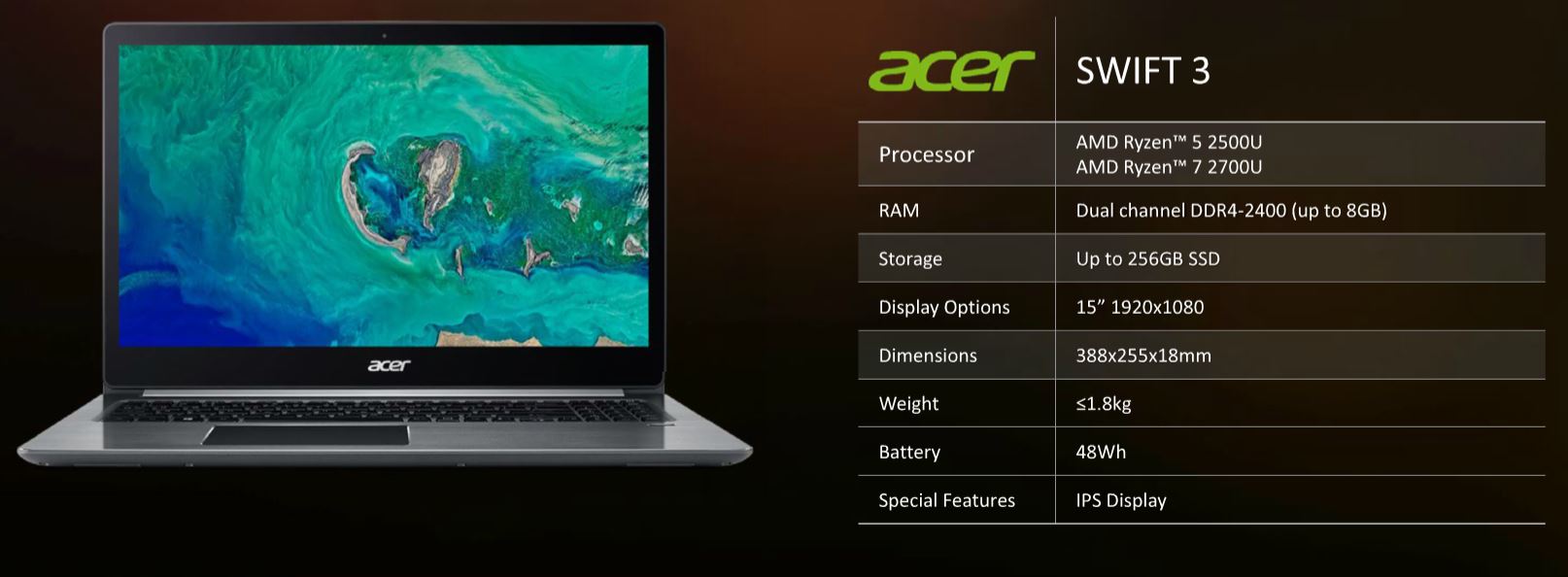
Likewise, the HP ENVY X360 with the larger battery looks awesome.
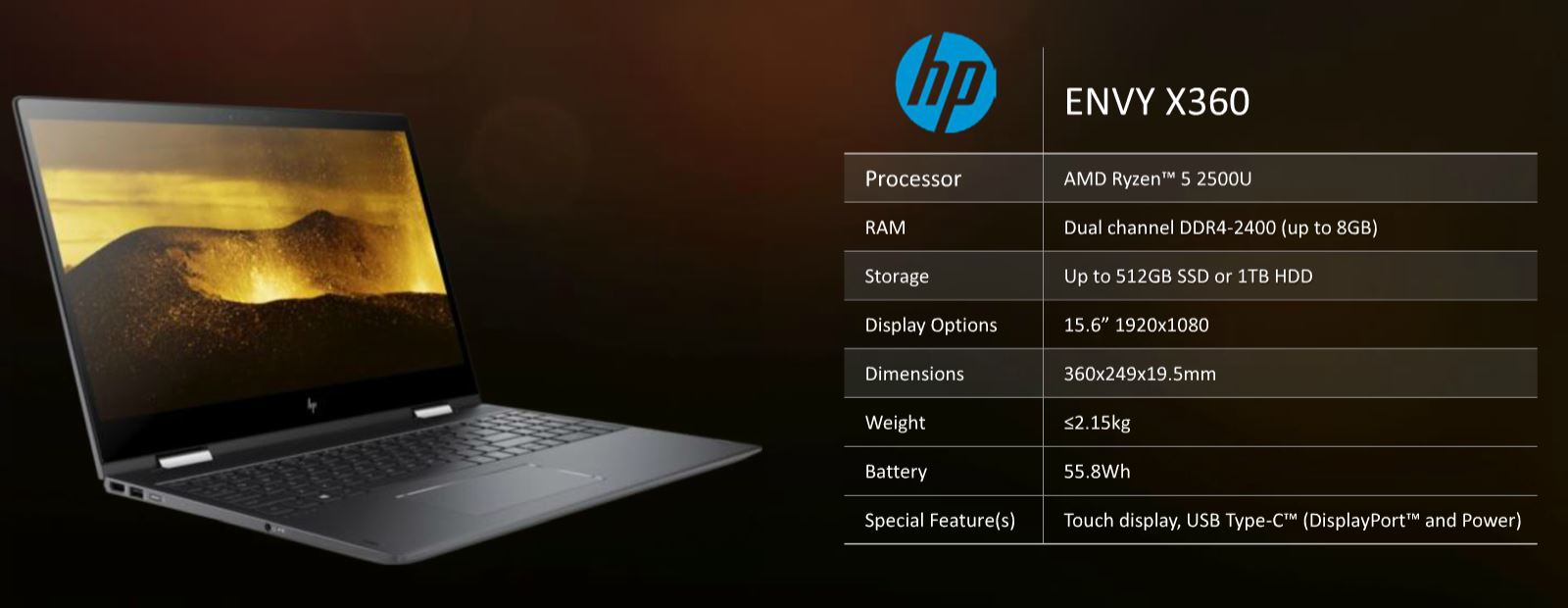
The Lenovo IdeaPad 720S has one major spec that stands out, the “Single Channel DDR4-2133” RAM. Using single instead of dual channel DDR4 and running it at DDR4-2133 is likely less costly to produce and can help with battery life. On the other hand, it cedes hope of being a decent gaming platform since the setup will be memory bandwidth starved with less than half the bandwidth of its competitors.
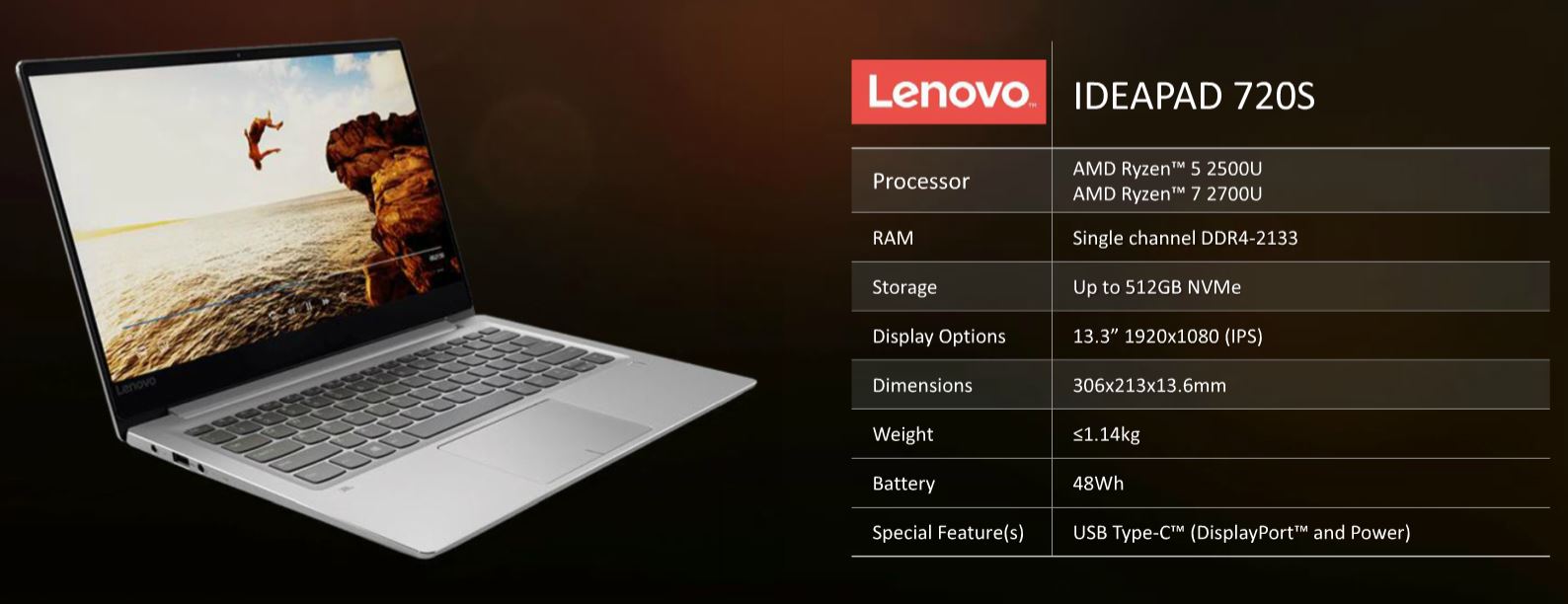
Final Words
Slightly higher TDP CPUs are going to be very interesting. We cannot wait to see what those details show. It seems like Intel is going to still be competitive in the Ultrathin battle in this generation based on what we are seeing. We do think the higher-end will be more competitive.

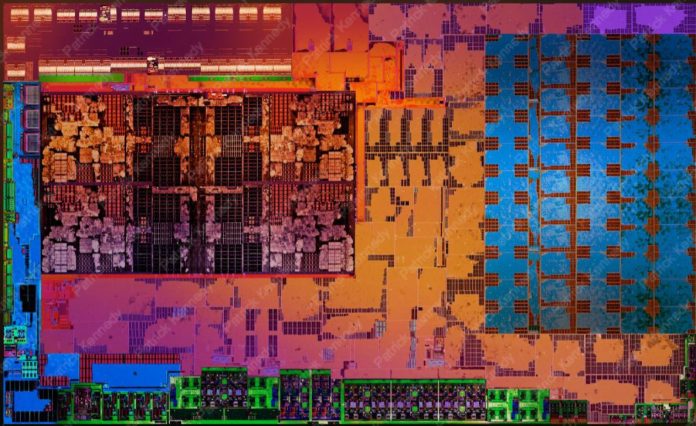
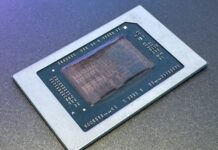

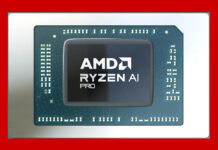
I’m curious if this style core will transition into a desktop variant with decent workstation graphics for high thread count and professional display output all rolled into one. That would give a much better bite to ryzen for lower price market share,
I would love this chip in my Surface Pro. Even if set at 9w
Conclusion:
missing a word to complete the sentence “It seems like Intel is going to … with the Ultrathin battle in this generation based on what we are seeing”.
Nevertheless, it means competition is good for us (mere costumer) as far as innovation, fair behaviour and right ASP drive the CPU maker.